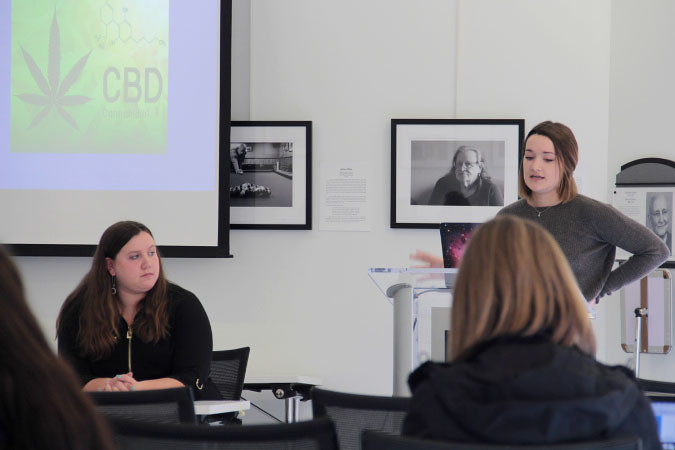Published on

By Mariah Cox
What do CBD, climate change, flat earthers, and anti-vaxxers have in common? All are prevalent in the propagation of ‘fake news’ in science.
Truthful and accurate reporting is crucial in the field of journalism to create a well-informed society. You may have heard the term ‘fake news’ a time or two, but what does fake news really mean, what does it look like and how does it arise?
“It’s important for everybody, all journalists, and really all human beings to kind of have a better understanding of where some of this information went wrong to be able to identify stories that might sound real that are probably not,” said Sarah Shipley-Hiles, an MU journalism professor who chaired the fake news panel hosted by the Science Health and Environmental Journalism (SHEJ) club on Wed., April 3.
In short, fake news is pseudo-news that contains disinformation or falsities that deceive the public. This false information sparks distrust of the media and causes strong debate among members of opposing ideologies.
SHEJ president Madelyne Maag opened the discussion Wednesday with the flat earth conspiracy theory.
“Flat earth theory is one of the most popular and talked about conspiracy since the 1990s when it first surfaced and then it nearly died out,” Maag said.
The flat earth theory is the belief that instead of the earth being spherical, it is on a plane with a wall surrounding it. It nearly died out in the 1990s when its creator died. However, the theory resurfaced with the rise of the internet and social media.
Facebook provided a platform for those still believing in the theory to connect and spread their ideology. To put it into perspective, the group of 3,500 original believers has expanded to a Facebook following of roughly 200,000 people now.
“Social media has magnified the problem, but it is not the sole source of the problem,” Maag said.
Other platforms such as Netflix, Hulu and YouTube have brought the flat earth theory to light through videos and documentaries, and further spread its doctrine globally.
To get an understanding of why conspiracy believers thrive, two cognitive researchers from Texas Tech attended the first flat earth conference in Raleigh, NC in 2017. Landrum and Olshansky conducted interviews with 50 attendees to better understand their motivations for believing the theory. They found that people who believe one conspiracy theory are more susceptible to believing other conspiracy theories.
They also found of the people they interviewed, most of them became aware of the theory through YouTube. They reported watching 9/11 conspiracy videos and being led to flat earth conspiracy theory through YouTube’s autoplay function and recommended videos.
And there is no shortage of user-generated content with the rise of the internet. The problem lies in unchecked information and deceptive claims being perceived as fact.
“Because of that, it shows that journalists have an important duty to get the story right the first time,” Maag said. “Those who are in charge of social media have a responsibility to make sure fake news and fake information is not given the light of day.”
The same problem presents in many science news topics, including rapid acceptance of Cannabidiol (CBD) oil as a natural ‘cure all’ despite not being approved by the FDA, anti-vaccination claims and misconceptions of climate change.
Anti-vaccination claims arose after British doctor Andrew Wakefield published a study in the Lancet suggesting a connection between the measles, mumps and rubella (MMR) vaccination to behavioral and developmental disorders in children. The study was later retracted as the study was not replicable by other researchers, thus invalidating its claims. Additionally, the study was funded by private interest groups who were against vaccine-producing companies.
“Jenny McCarthy went on Oprah, the Today Show and the View and talked about her own anecdotal experience of her son having autism so she claims that the vaccine for MMR led to that,” said Ashton Day, a graduate student at MU.
Because of the reach of these television shows as well as McCarthy’s following, among other causes, this belief was able to spread into public thought and encourage support for this stance.
The panel concluded that current journalistic reporting is doing a disservice to public perceptions of these issues.
“Unfortunately, the media played a big part in spreading the problem,” Shipley-Hiles said. “Journalists, in an attempt to be fair, cover these issues like a football game or a political battle. They just say these people say climate change is happening or not happening, you figure it out.”